This month's Ask the Expert is Andrew Maguire.
Andrew Maguire is an Independent London Metals Trader and Analyst, internationally renowned for his unique ability to read the precious metals market with the knowledge and experience gained over 35 years trading in financial and commodity markets. Andrew sits on the advisory board of a global physical bullion exchange and is a consultant advisor to many international hedge fund managers, bullion banks, directors and metal traders globally. In 2009, Andrew decided to go public and provided evidence to United States regulators relating to fraud and price manipulation that was being committed globally in the international gold and silver markets. This put him at the epicentre of global controversy for exposing what could be the largest fraud in history involving countries, banks and government leaders, which is still an ongoing investigation.
Transcript:
Craig: Well, welcome back to Sprott Money News. This is your Ask the Experts segment for October 2016. I'm your host, Craig Hemke, and joining us this month is Andrew Maguire. Andrew is a London based precious metals trader and wholesaler, and he's also the president of his own firm, Goldstar Global Ltd. And many of you are familiar with Andrew. You must be, because we received an abundance of questions for him. Again, the questions submitted for Ask the Expert come from Sprott Money customers and they're emailed in over the course of the month, and now this is your chance to have them answered.
Today we're gonna do the format just a little bit differently. I've got six questions that we've kind of consolidated from all of the Sprott Money customers. But I'm gonna hit Andy with the first three all at once, and then let him kind of tie them together, and in a manner that only he can. So Andy, thank you so much for joining us here at Sprott Money News. Really appreciate it.
Andrew: It's great to be with you, Craig.
Craig: All right, my friend, let's just dive right in. Like I said, I'm gonna hit you with three questions at once, and I'll let you kind of tie them together and then answer them collectively. And then we'll get to the other three questions after that. But these questions seem to connect and that's why we thought that this would be a good idea.
The first kind of consolidated question from the Sprott Money customers was, what will keep the banks, the bullion banks, from shorting paper gold to infinity, and then central banks from printing paper currency to infinity in order to keep the current system afloat? Then, what drivers could ultimately cause a disconnect between that paper price and the physical price, and when would you foresee that possibly happening? And then lastly, with this price rally thus far in 2016, do you sense that conditions in the physical market in London have tightened? So if you could take those three and kind of run with it, go right ahead.
Andrew: Okay, yes. And I think it's wise to...otherwise we'd never get through all the questions. But I think, what I'll do is I'll really do that, and I think we need to step back, look at it and then...so that hopefully there's no questions after this. But cutting right to the bottom line. Let's cut to the bottom line first.
It is the physical market that will put an end to the central planners mandate to suppress the price of gold, but there is a limit as to how much synthetic gold can be electronically generated. Now, what is often forgotten, Craig, is that the synthetic market price is in fact ultimately deliverable, as it sets the deliverable spot price in London twice a day. So, to put things into perspective, out of the 500 to 600 tons of unallocated gold that gets cleared in London every day, and I did say every day, only some five to seven tons ever get delivered.
Now, with silver, we see some 5,000 tons get cleared every day, with only a fraction of that delivered. Now, we're talking fractional reserve gold and silver, and we all know this story, and we know for a fact that there's at least 92 ounces of gold traded every day for every ounce held physically. Now, we have that from the Reserve Bank of India report 2010. It's unequivocal.
Now, with silver, many plausible estimates suggest over 400 to 1. So yes, by increasing the supply of fractional reserve gold, it is dilutive of the physical price, but this supply can only be generated to the point that a sufficient percentage of this paper non-deliverable gold is accepted by investors and traders. Now, up until now, there have been a sufficient number of synthetic non-delivery traders and investors willing to accept this fractional reserve gold as inventory despite this synthetic gold representing a high counter-party risk loan to the bank selling this gold and silver. Which is much like when you deposit cash at a bank. Is it in fact a loan to the bank?
Now, this is where it gets interesting, though. Never in history have we seen such a large run on fractional reserve gold and silver by investors, and now by institutional traders looking to circumvent counter-party risk. Now, over the last couple of years, the physical side of the gold market has migrated to Asia where real physical buyers do not accept anything but the real thing. Now, this means, under our noses, and not fully appreciated, thousands of tons of fractional reserve gold are being demanded for delivery.
Now, as 92 to 1 gold gets unwound, the leverage starts to work against the naked short sellers. For each ton of gold demanded for physical delivery, some 92 tons must be bought on the open market. Now, this is occurring off the radar of the paper markets and has reached a point of inflection where it starts to backwash into the paper markets. Now, this is a change in behavior. Now, so many of the questions asked, "How come this is not affecting the price today?" The answer is, the scaremongering downside targets are not going to be achieved because the sovereign size aggregated physical interest levels happen to be underpinning a lot of the residual naked long COMEX positions that would normally be easy to rinse.
Now, we've seen the usual swap of synthetic open interest on the COMEX, and these specs are guaranteed not to take delivery. So the commercials use the power of concentration to stare these gold longs down at delivery dates that don't even have to have the physical to do so. Now, obviously this swap of synthetic open interest still creates unnecessary volatility, but we cannot ignore that the physical market is poised to absorb everything being offered.
Now, just to understand why the bullion banks are able to trade naked short. Now, the market making bullion banks control the bulk of all gold derivatives, and for each long, there's a short. Now, we see these positions reported by the CFTC and the Office of the Comptroller, and connecting the dots through these reports, it becomes blatantly obvious that in these reports there are a very large percentage of the COMEX short positions have historically been held by just two to four banks. And those names are... We all know what those names are, they can be derived from the OCC report. These two to four banks have pitched against hundreds of traders if not thousands of traders. Now, this is a casino operation.
Now, the banks and the mainstream media argue that these large short positions are not directional as they're hedged on in the opaque over the counter spot market in London. Now, these banks report to a self-regulatory organization called the CME, and the CFTC regulators, that they are hedged long in London on these positions. You have to take this at face value. However, we already have hard evidence that the gold market is fractional to the tune of at least 92 to 1. Therefore what we have in fact is a COMEX paper market short hedged by a high counter-party risk market long which in its own right is actually a short bet. So you've got to... As long as paper gold is accepted, this game has been able to be perpetuated.
So what is changing? Why can't this sham keep going? This is because the cartel has finally split ranks. We've already seen evidence of this under the radar. But the most recent example of this is Deutsche Bank admitting colluding with other banks, while throwing the other bullion banks under the regulators' bus to gain immunity. However, this immunity does not extend into the civil courts. We're about to see billions of dollars' worth of claims be instigated against all of these too-big-to-fail banks. It is not yet realized that these claims extend into the massive derivative markets. There is a potential for trillions of dollars of claims to be made, and this includes producers forced to sell or hedge at a discount, all the way downstream through institutionals, all the way down to individuals trading futures and options.
Now, the banks being sued also have accounts at the Bank of International Settlements, at the Bank of England, essentially Bank of International Settlements. So this stretches all the way to the BIS gold trading desk. There is no way that these banks can be bailed out yet again because the regulators dragged their feet to protect these too-big-to-fail banks from collapse back when we provided hard evidence of collusion in 2009. The problems become exponentially worse.
Now, the bullion banks are bankrupt. I mean, my goodness, we had Ted Butler complaining to the regulators about silver manipulation almost 20 years ago, and nothing was done. Now, what we're saying is, the fractional reserve system is finally broken. Without a functioning paper market, the sham cannot continue. The LBMA daisy chain is breaking. It has taken far longer than we all expected, and I know that's brought a lot of frustration to people, but whereas in the past there was no alternative institutional physical solution, the good news is we finally have an alternative institutional solution for the precious metals markets. And without a fully functional deeply liquid institutional solution, it wouldn't take much longer for the paper market to be forced to cash settle naked short positions, which is the only ultimate way it can ever be bailed out.
Now, the first fully functional electronic physical exchange is now operational and I sit on the advisory board for the allocated bullion exchange. I'm also active as a broker for this disruptive physical exchange. It is now possible to securely buy and sell bullion in real time, and at institutional size, with the click of a mouse, 23 hours a day, and store it in jurisdictions outside the control of the bullion banks or officials. Now, this outflow of leverage synthetic liquidity into real allocated physical, is draining the lifeblood out of the Fractional Reserve System and will change the way gold is traded forever.
We are witnessing the demise of the fractional reserve gold and silver market here in 2016. Now, given the lawsuits, and the freshly available physical alternatives, the jig is finally up. I see 2016, as the history books will look back at this year, at the outdated 100-year old gold market and how it changed forever. So, I hope that covers the three questions in entirety.
Craig: I would certainly say it did, Andrew, and I think anybody that just listened to that, needs to go back and re-listen to it, and listen to it one more time so that they can fully understand how important that information is that you relayed. You did mention that 2016 is a big year. We've called it a year of consequence. This has taken a lot longer than what we might have thought five, six years ago, but do you... Again, that last part of those questions was, do you foresee this all now moving forward at a quicker pace?
Andrew: I absolutely do and, as I say, it really does revolve around the fact that people are no longer willing to accept synthetic gold as an investment. And we're talking about really where it's important on the institutional level. And when the institutions move, even if they're not planning to even take delivery, they need to know, when they're trading, that they are actually holding that physical and that it exists. I'm sure that their compliance departments, after we've seen the problems with MFG and those problems we've seen in the past, are all over them to make sure that there is physical behind each and every position.
Craig: In synthetic gold, do you mean the derivative contracts, or are we talking more about the unallocated accounts that are held all over the world?
Andrew: All of those things together. I think when we know that... Over the COMEX, as we know, is traded on a fractional reserve basis, i.e. there's lots of margin involved, and therefore it's reliant on the fact that people who trade positions on that - and I'm talking about the concentrated positions of the bullion banks who we know hold a large concentrated short position - have that offset, and claim to have an offset on the over the counter markets, which we already know are 92 to 1 leverage. So, again, what we're seeing is a naked short market. So, yes, I'm talking about synthetic gold in its entirety.
Craig: Got it. Okay, let's move on to the remaining questions. Again, we had a number of questions get emailed in this month, and what I've tried to do is consolidate them so that everybody can at least recognize parts of their questions in what we actually pose to Andy. The fourth question is...and it gets back to something you mentioned earlier, that physical trade are migrating to Asia. Many folks were hopeful that the new Shanghai Gold Exchange and the Shanghai Gold Daily Fixes that were initiated back in April, would draw price and power away from London. Yet on the surface, that doesn't seem to have occurred yet. Why is that, Andy?
Andrew: Yeah, and that's exactly what we're seeing, is on the surface. Now, obviously we've got this leverage... When you have an unwind of leverage, there's obviously a, we're seeing 600 tons cleared every day of gold, 5,000 tons of silver. It takes a little while for the physical market to backwash. However, there's a point to where it gets traction. And I think the SGE fix is affecting the pricing power of the over the counter paper markets too a...and increasingly so, that each morning I see this slow backwash increasingly affect the London Open, which I watch very, very carefully.
Now, in order to trade on the SGE, a participant has to have first deposited the physical gold, and this brings some order to the proceedings. And what a novel idea, right, Craig, to actually have physical to trade. So, obviously this sets a tradable physical price, something that's real. Now, due to the closed nature of the Chinese gold market, there are currently limited arbitrage opportunities between the closed Chinese Market and the global unallocated paper markets. However, as the physical exchanges suck out paper market liquidity, we will see this real market effect increase, much of it is in SGE, but on a much larger global scale. As we've just outlined, the physical markets are now starting to wag the paper market tail, and the unwind of 92 to 1 gold is underway globally.
Craig: Let me ask you my own question on that, because we've been...a lot of folks on my site, at TF Metals Reporting, we've been wondering how wide the arbitrage has to get. We see it in silver, sometimes almost a dollar an ounce. How wide does the arbitrage have to get to really affect the gold moving, you know, buying it in London at the discounted price and then selling it at a higher price in Shanghai? And is it wider than you'd expect because the standards for the metal are different and higher in Asia? Can you comment on that, Andy?
Andrew: Yeah, obviously you've got four nines gold versus 995 gold. So there is always that aspect to it. But I think we're also dealing with a closed market, a very closed market. Even though you have the international-facing side of things, I think that the bulk of the action really is dictated as to what happens inside the Chinese marketplace, and you can't export gold. So, I think...this is why I always say it's so important. One has to take account of the fact that the gold market has fully migrated. The physical market has fully migrated.
So really all that's left is a paper market in London. So you have to take note of the fact that there's a lot of physical market trades being set in Asia by the SGE price, so therefore you've got a bit of a backwash going on, and we're certainly seeing it. I see it when I look at my wholesale platform in the morning, and we look at the prices, our live prices in Shanghai, Hong Kong, etc., and you can see that we're trading, people are buying and selling real physical at significant premiums to the actual London spot price and very close to the SGE price.
Craig: Yes. All right, shifting gears. The next question has to do with silver primarily. And the question is, what is your current outlook for silver and do you expect the gold/silver ratio, which these paper markets have distorted to 70 to 1? Do you expect that gold/silver ratio to ultimately decline back to its historic norm? And additionally, what do you make of platinum trading at such a steep discount to gold? That's rather unusual too.
Andrew: Yes, I think that... Let me just put it upfront that I think that silver is incredibly undervalued here. I see silver as having a huge potential to break up to the upside. In fact, even if you weren't trading silver, one should keep a very close eye on silver because it's the same actors incredibly undervalued. I see that to watch silver very closely, even if you don't trade gold, because it will lead the way higher. And as we know, it always exponentially moves much faster out of the gate. Now, it's the same actors as in gold, only their footprints are much easier to read. So I think that's what's interesting about silver that will lead, and I think that's what tells me when gold will really break out.
As far as its relationship to platinum's relationship etc... Sorry, the gold/silver ratio. I think really it's 16 to 1. It would not be unreasonable. I think 35 to 1 is where we should be right now. I think 16 to 1 is where we'll ultimately be. And as far as you mentioned, the platinum, as we move down from gold through silver, to platinum, palladium, etc., we start to move more from pure currency into a slight commodity, a more and deeper, deeper commodity across. So you're looking... Even though they all trade as currencies - all of these trade as currencies - I still think that the deeper you get down that line, the more the commodity markets affect the price. So, obviously that's why we see... But I think as far as silver is concerned, I think that, to me, it should be trading in lockstep with gold. It should be trading at 16 to 1 or thereabouts, ultimately.
Craig: So the platinum is more traded as a commodity in lowering price in gold, because it's reflective of its commodity value, its industrial value, more than its monetary value. Is that the way to summarize that?
Andrew: That's exactly how I see it, yes.
Craig: Okay. Finally, the last question, and this is more of a macroeconomic question, and if you don't mind taking a stab at it at least. But we had a couple of questions dealing with just the overall mass of debt around the globe. You see trillions and trillions of dollars of debt that have been accumulated in this Keynesian [SP] system. Do you have any thoughts about how this mass of global debt would ever be unwound? Or does it just expand to a breaking point? And then finally, with that in mind, what are your short term and long term thoughts on the U.S. dollar?
Andrew: Okay. I think that there has to be an unwind, and I can't see any other... There's no way of paying the sort of debt that we're looking at, and what the 17 countries with negative interest rates, the 13 trillion or plus of negative interest rates. And then you look at the U.S. By the time you add all the extras in, 20 trillion goes to 32 trillion or thereabouts. There's no way of paying that back.
There is only one possible solution, other than war or some other terrible event, would be to reset the price by dividing your 8,000 odd tons of re-hypothecated gold into the debt and come up with a price. Interesting thing about that is that you've got... With the average American owning, what, about an ounce of gold or there in a form of jewelry, but the average Indian rural farmer riding down this dusty road on his bicycle having kilos of gold through dowries over the centuries, who suddenly becomes wealthy. Suddenly we flip around from people who think they're wealthy to people who own the gold, who become incredibly wealthy in Fiat terms.
As far as my thoughts on the U.S. dollar goes, I mean, what is the U.S. dollar? It sits atop a worthless fiat heap, and measured against that heap, we'll possibly see the U.S. dollar rise. However, more importantly, the price of gold measured in dollars will rise significantly faster. And as we know, gold in every other currency is in a bull market. And of course, what we're talking about is Fiat gold versus every other currency, and we must lose this U.S.-centric view of gold. In physical form, gold is a global currency, as it's been for 5,000 years. It was hijacked by the paper markets, but that game is now dead in the water. Gold will rise measured against all currencies.
Ultimately, there's only one source of available, immediately deliverable above ground supply of physical gold, no matter which currency it's delivered in. And in the U.S.-centric world of gold, it's easy to lose sight that this draw-down of physical bars is not just conducted in gold and nominated in dollars. And this serves to underpin the global wholesale markets. So really, that's... You have to look at the U.S. dollar in relationship to gold.
Craig: Fabulous. Absolutely correct, and Andy, I can't tell you how extraordinarily valuable I think most folks will find this particular version of Ask the Expert. Thank you so much for spending some time with us today and sharing all of these insights.
Andrew: Craig, it's been an absolute pleasure, and I think a lot of Eric Sprott.
Craig: And from everyone here at Sprott Money News, thank you for listening, and we'll do this again next month.
Don’t miss a golden opportunity.
Now that you’ve gained a deeper understanding about gold, it’s time to browse our selection of gold bars, coins, or exclusive Sprott Gold wafers.
About Sprott Money
Specializing in the sale of bullion, bullion storage and precious metals registered investments, there’s a reason Sprott Money is called “The Most Trusted Name in Precious Metals”.
Since 2008, our customers have trusted us to provide guidance, education, and superior customer service as we help build their holdings in precious metals—no matter the size of the portfolio. Chairman, Eric Sprott, and President, Larisa Sprott, are proud to head up one of the most well-known and reputable precious metal firms in North America. Learn more about Sprott Money.
Learn More
You Might Also Like:



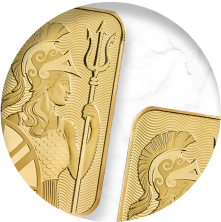
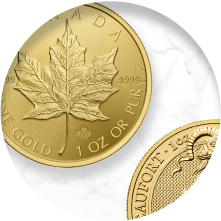
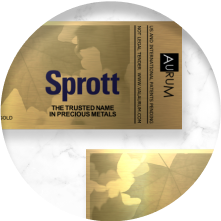
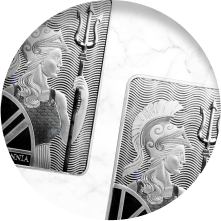
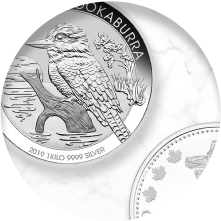
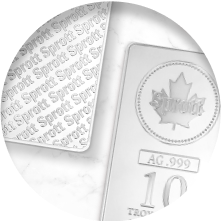

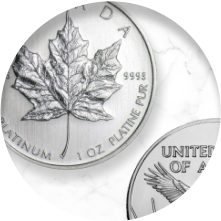

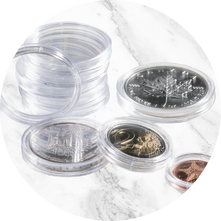
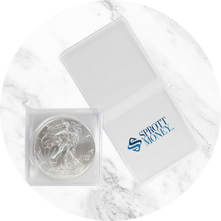




Share: